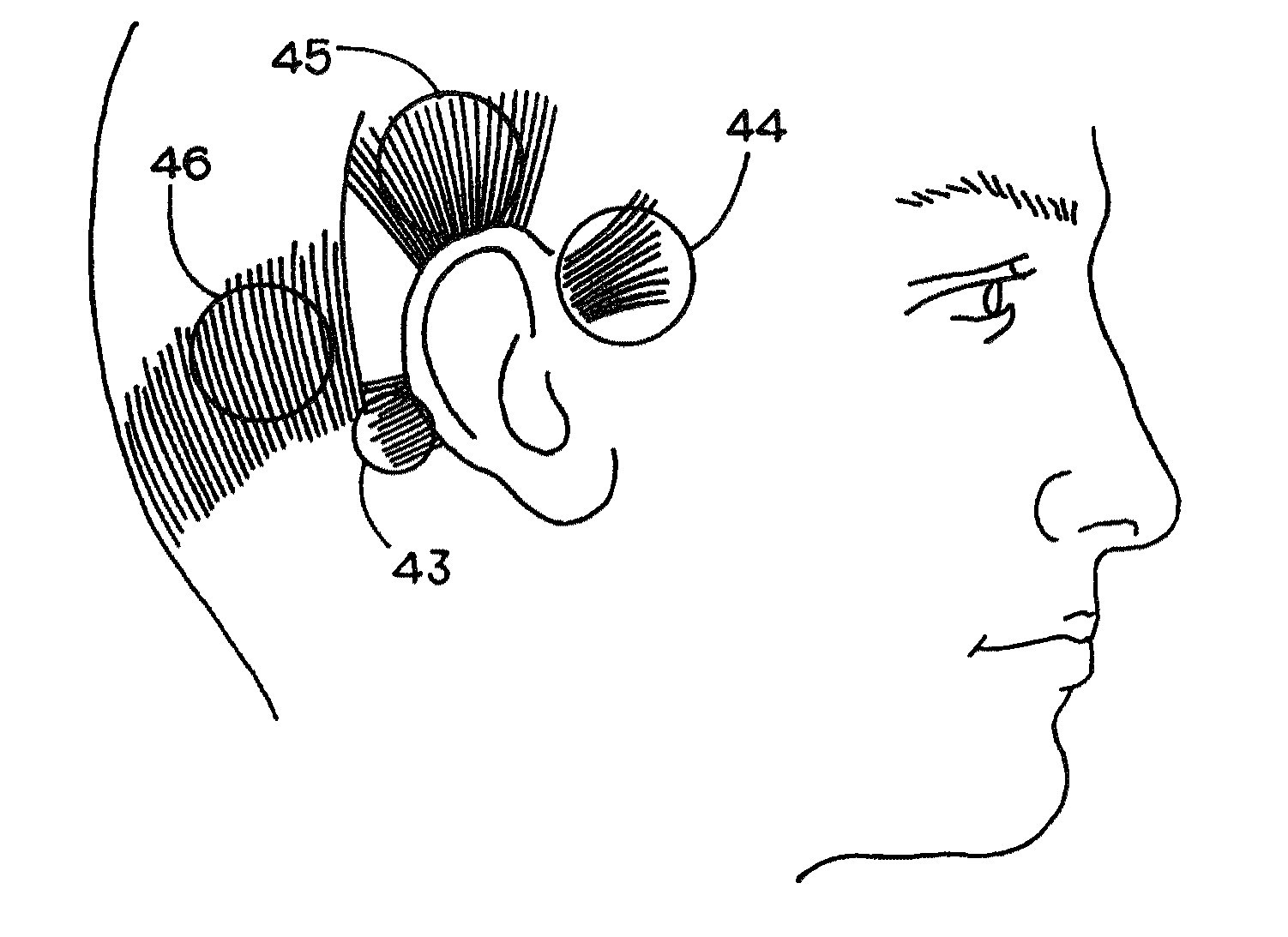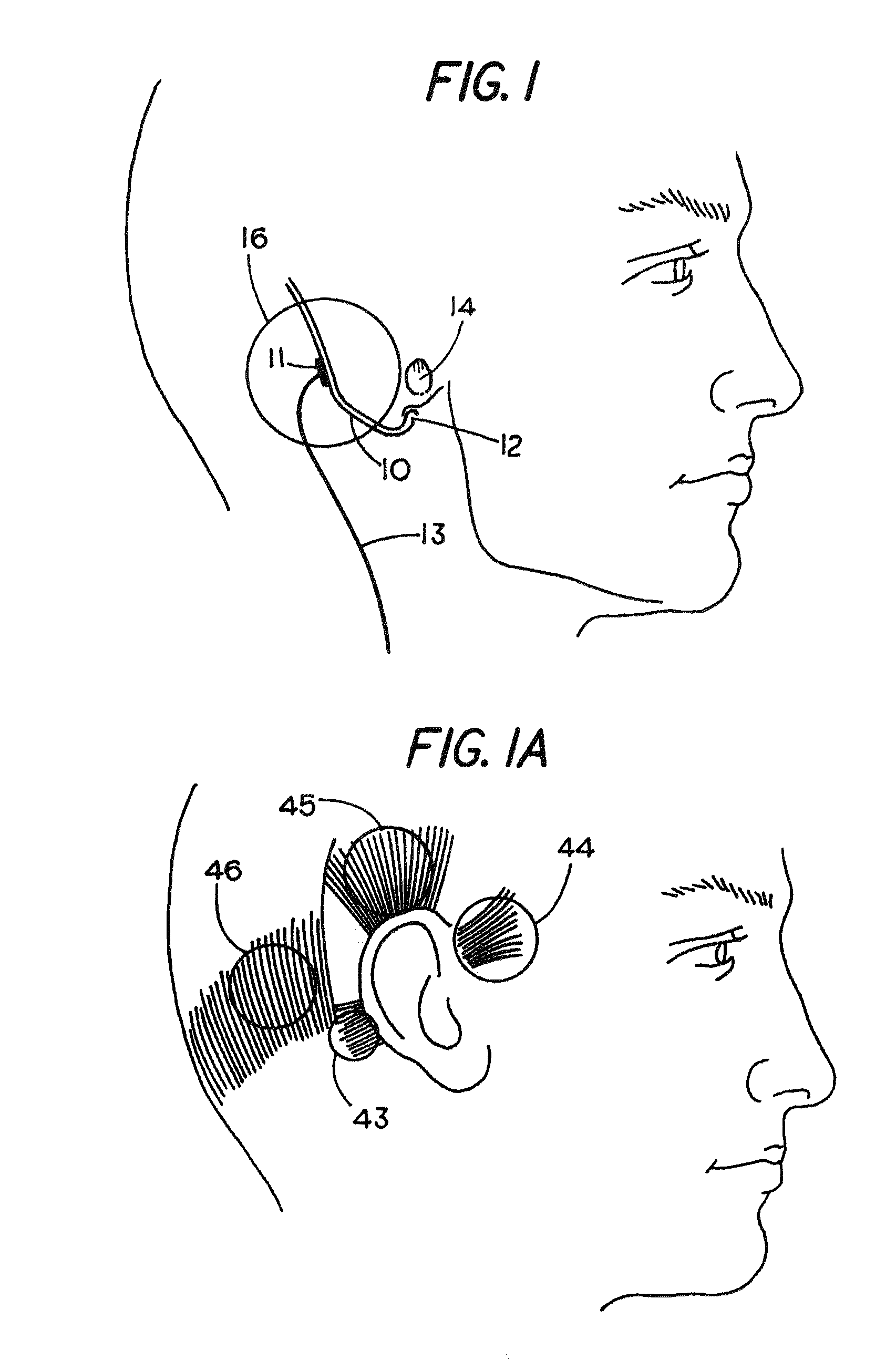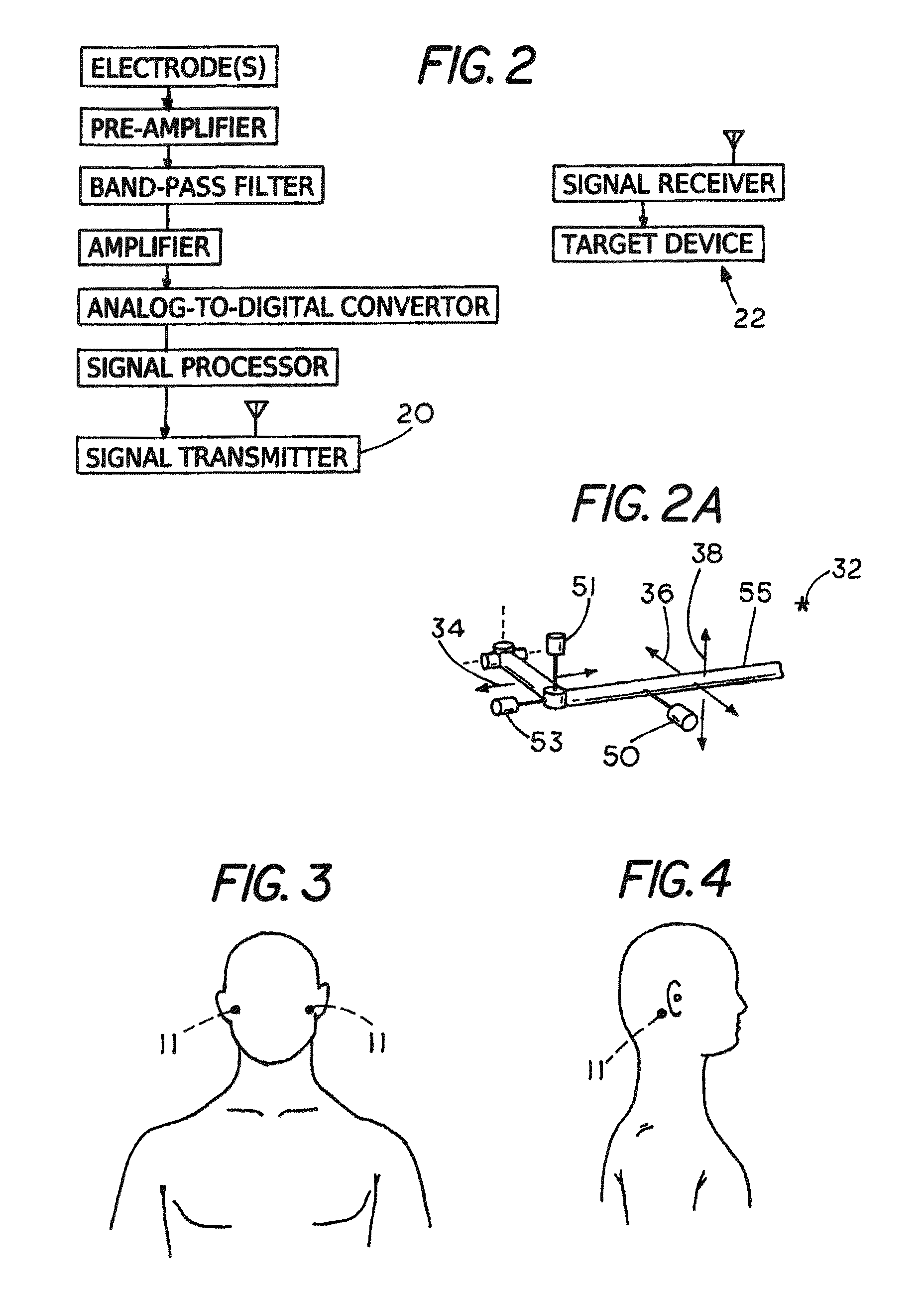Control System and Apparatus Utilizing Signals Originating in the Periauricular Neuromuscular System
a technology of periauricular neuromuscular system and control system, which is applied in the direction of pulse technique, instruments, applications, etc., can solve the problems of cumbersome external equipment, inability to control with precision, and loss of the ability to interact with the environment, so as to achieve wide-ranging control capability
- Summary
- Abstract
- Description
- Claims
- Application Information
AI Technical Summary
Benefits of technology
Problems solved by technology
Method used
Image
Examples
Embodiment Construction
[0031]The invention will be more clearly understood by referring to the figures given by way of example which show how bilateral signals from the nerves and muscles of the periauricular system are captured by electrodes according to my invention. Refer now to FIG. 1 which depicts the location and anatomy of the posterior auricular nerve 10. Also shown is the location 12 where the posterior auricular nerve branches off from the facial nerve, where the facial nerve exits the cranium, and where the Posterior Auricular Nerve lies relative to the Ear Canal. The external auditory meatus is designated 14. The preferred location for the signal detecting element is circled at 16. Sensing electrodes 16 are surgically implanted bilaterally in electrically conductive relationship to the posterior auricular nerve as shown in FIGS. 1A, 3, 4, 5, 6 and 7.
[0032]FIG. 1A is an anatomical depiction of the periauricular muscles. The preferred locations for surface electrodes placed in electrical contact...
PUM
 Login to View More
Login to View More Abstract
Description
Claims
Application Information
 Login to View More
Login to View More - R&D
- Intellectual Property
- Life Sciences
- Materials
- Tech Scout
- Unparalleled Data Quality
- Higher Quality Content
- 60% Fewer Hallucinations
Browse by: Latest US Patents, China's latest patents, Technical Efficacy Thesaurus, Application Domain, Technology Topic, Popular Technical Reports.
© 2025 PatSnap. All rights reserved.Legal|Privacy policy|Modern Slavery Act Transparency Statement|Sitemap|About US| Contact US: help@patsnap.com



